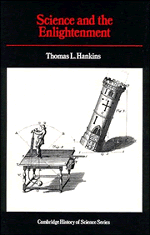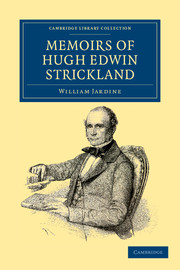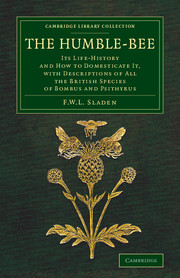Refine search
Actions for selected content:
12661 results in History of science

Scientific Method in Practice
-
- Published online:
- 05 March 2015
- Print publication:
- 12 December 2002

The History and Present State of Electricity
- With Original Experiments
-
- Published online:
- 05 February 2015
- Print publication:
- 05 September 2013
- First published in:
- 1767

Science and the Enlightenment
-
- Published online:
- 05 February 2015
- Print publication:
- 26 April 1985

Mathematical and Physical Papers
-
- Published online:
- 05 February 2015
- Print publication:
- 30 June 2011
- First published in:
- 1882
Vesalius: The China Root Epistle - Half title page
-
- Book:
- Vesalius: The China Root Epistle
- Published online:
- 18 December 2014
- Print publication:
- 12 January 2015, pp i-ii
-
- Chapter
- Export citation
To the Illustrious and GreatDuke of TuscanyCosimo de’ MediciPatron of StudiesGreetings from
- from Text
-
-
- Book:
- Vesalius: The China Root Epistle
- Published online:
- 18 December 2014
- Print publication:
- 12 January 2015, pp 5-12
-
- Chapter
- Export citation
Vesalius’ Index of Wordsand Subjects
-
- Book:
- Vesalius: The China Root Epistle
- Published online:
- 18 December 2014
- Print publication:
- 12 January 2015, pp 247-263
-
- Chapter
- Export citation
11 To the Most LearnedJoachim Roelants,10Chief Physician at MechlinGreetings to a Dear Friend
- from Text
-
- Book:
- Vesalius: The China Root Epistle
- Published online:
- 18 December 2014
- Print publication:
- 12 January 2015, pp 13-234
-
- Chapter
- Export citation
Translator’s Introduction
-
- Book:
- Vesalius: The China Root Epistle
- Published online:
- 18 December 2014
- Print publication:
- 12 January 2015, pp xvii-xxviii
-
- Chapter
- Export citation
Copyright page
-
- Book:
- Vesalius: The China Root Epistle
- Published online:
- 18 December 2014
- Print publication:
- 12 January 2015, pp iv-iv
-
- Chapter
- Export citation
Bibliography
-
- Book:
- Vesalius: The China Root Epistle
- Published online:
- 18 December 2014
- Print publication:
- 12 January 2015, pp 243-246
-
- Chapter
- Export citation
Prosopography of Early Modern Persons Mentioned in theChina Root Letter
- from Text
-
- Book:
- Vesalius: The China Root Epistle
- Published online:
- 18 December 2014
- Print publication:
- 12 January 2015, pp 239-242
-
- Chapter
- Export citation
Vesalius: The China Root Epistle - Title page
-
-
- Book:
- Vesalius: The China Root Epistle
- Published online:
- 18 December 2014
- Print publication:
- 12 January 2015, pp iii-iii
-
- Chapter
- Export citation
Text
-
- Book:
- Vesalius: The China Root Epistle
- Published online:
- 18 December 2014
- Print publication:
- 12 January 2015, pp 1-242
-
- Chapter
- Export citation
Contents
-
- Book:
- Vesalius: The China Root Epistle
- Published online:
- 18 December 2014
- Print publication:
- 12 January 2015, pp v-xvi
-
- Chapter
- Export citation
An Italian Treatisein which is investigated200
- from Text
-
-
- Book:
- Vesalius: The China Root Epistle
- Published online:
- 18 December 2014
- Print publication:
- 12 January 2015, pp 235-238
-
- Chapter
- Export citation

Memoirs of Hugh Edwin Strickland, M.A.
-
- Published online:
- 05 January 2015
- Print publication:
- 03 November 2011
- First published in:
- 1858

The Humble-Bee
- Its Life-History and How to Domesticate it, with Descriptions of All the British Species of Bombus and Psithyrus
-
- Published online:
- 05 January 2015
- Print publication:
- 17 July 2014
- First published in:
- 1912
Plate Section
-
- Book:
- The Dodo and its Kindred
- Published online:
- 05 June 2015
- Print publication:
- 01 January 2015, pp -
-
- Chapter
- Export citation
Chap. II - Osteology of the Solitaire
- from PART II - Osteology of the Dodo and Solitaire
-
- Book:
- The Dodo and its Kindred
- Published online:
- 05 June 2015
- Print publication:
- 01 January 2015, pp 113-119
-
- Chapter
- Export citation
